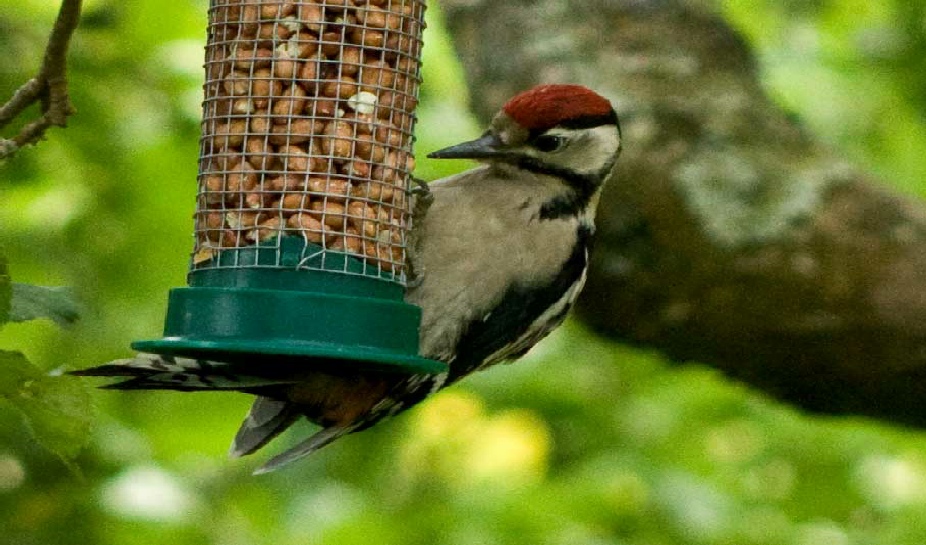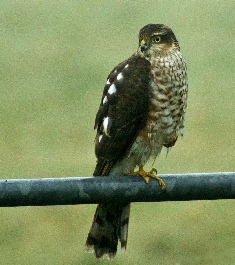Birds in
Thorncombe
The countryside of West Dorset , and in particular of this area, is well-suited to
supporting numbers of hedgerow and garden birds. For those of us who feed the birds
regularly in our gardens, we are familiar with all the usual visitors such as blackbirds,
chaffinches, blue tits, as well as other tits (Great, coal and long-tailed). Dunnocks
and many finches are frequent visitors, as well as nuthatches and tree-creepers.
We often see great spotted woodpeckers on the peanut-feeder, and green woodpeckers
mining the lawn for ants.
Thorncombe is surrounded
by fields
The small fields, patches of scrubby woodland, dense thickets of brambles and undisturbed
hedges all support a rich variety of bird-life, as well as the insects, moss, lichen
and seeds they need. The hedges in particular are worth noting, as they are dense
and in places extremely old, (see Hedge Dating in Blind Lane). The mixture of species
supports a wide range of insects and invertebrates which in turn support birds and
small mammals.
Thorncombe is an island of habitation in the middle of this rich environment, and
many of us do what we can to encourage its spread into our gardens . Dorset Wildlife
Trust runs a highly successful scheme to encourage everyone to consider wildlife
when gardening (see The Wildlife Friendly Garden Award Scheme www.dorsetwildlifetrust.org.uk/wildlife-friendly-gardens-scheme.html
), which helps us all to see how birds cannot be considered alone, that the whole
garden needs to be looked afresh in order to encourage a good balance of species.
In Thorncombe we’re all familiar with the cry of the buzzards as they circle overhead.
There seem to be nests in the Dungeon woods most years, and it is a real joy to see
the parents taking the young out for practice flights on warm summer days.
One can also see rooks mobbing buzzards, trying to push them away from the area.
Swallows, martins and swifts arrive in April, and sometimes one can see a hobby accompanying
the flocks, waiting for a ready-meal.
The numbers of swallows and house-martins seem to drop annually - in the 1970’s and
80’s the telephone wires were crammed with twittering flocks, but more recently these
numbers have dropped dramatically. Their twittering noises and the way they swoop
over ponds to drink and catch insects are real sounds of summer.
Chard Junction Nature
Reserve
The reserve is a wonderful, secluded environment, perfect for many different species
of birds. There is a colony of sand-martins nesting in the reserve, in 2010 a pair
of ringed plovers nested there and the record book in the hide makes interesting
reading.
In March 2010 a Great Bustard was seen at the reserve. These amazing birds were
recently re-introduced on Salisbury Plain and had their first successful fledging
in 2010 - the first time since 1832! This particular bird has been seen at Chard
Junction while 3 others spent some of that winter on the Somerset Levels. See http://greatbustard.org
for details of the re-introduction of these very extraordinary birds.
If you're a keen bird-watcher and are not too sure what bird you've seen, try the
easy to use bird identifier, or have a look on the
A-Z of birds pages of the RSPB website.
Please let us know of any unusual sightings and/or send in photos for the site.





